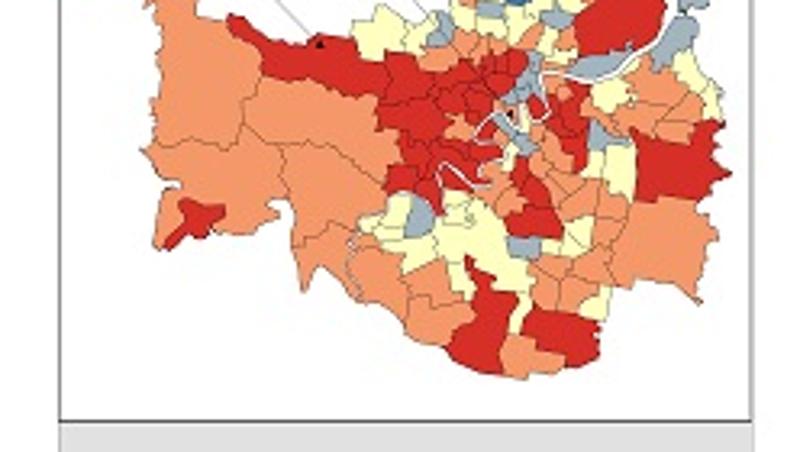
The number of Brisbane suburbs suffering “extreme” temperature rises will increase unless effective planning policies are introduced, QUT research has found.
Dr Liton Kamruzzaman and PhD researcher Kaveh Deilami, from QUT’s Science and Engineering Faculty, analysed the potential impacts of five alternative neighbourhood development scenarios for Brisbane.
Using remote sensing images of Brisbane from 1991-2013, they produced thematic maps to predict the Urban Heat Island (UHI) impact of five urban planning scenarios on Brisbane in 2023.
The UHI effect is a phenomenon when urban areas experience a higher temperature compared to their surrounding areas.
The researchers found infill development, which focuses on developing vacant or under-used parcels of land, would be the most effective intervention to control the UHI effect in Brisbane, but would still generate pockets of “extreme” UHI. Sprawl development would generate a moderate UHI effect disbursed throughout the city.
Under an infill development plan, the suburbs that would be warmer in 2023 than 2004 include Windsor (1.08 degrees warmer), Wilston (1.16 degrees) and Paddington/Milton (1.58 degrees). Sprawl development – focusing on outward expansion of urban areas - would be good news for the inner city suburbs, with Fortitude Valley (-3.08 degrees), Spring Hill (-2.27 degrees) and South Brisbane (-2.23 degrees) all predicted to cool in such a scenario.
The research has been published in Land Use Policy journal.
“Our findings show that the number of suburbs suffering extreme UHI effect is increasing, from 10 per cent in 1991 to 20 per cent in 2013, and this trend will continue if effective planning policies are not introduced,” Dr Kamruzzaman said.
“The UHI effect increases discomfort, energy demand, heat-related mortality, and global warming. The way we plan and design our neighbourhoods plays a significant role in controlling and mitigating the UHI effect, so it’s essential to examine which policies are most effective to reduce UHI effects.”
Dr Kamruzzaman said on average urban areas in Brisbane would experience 2.44-2.54 degree higher temperatures compared to rural areas in 2023.
“On average, Brisbane will experience a higher level of UHI effect in 2023 compared to the 2004 level irrespective of the policy scenarios,” he said.
Dr Kamruzzaman said further research was needed to devise new planning standards that mitigate UHI effects while meeting planning needs.
Media contact:
Rob Kidd, QUT Media, 07 3138 1841, rj.kidd@qut.edu.au
After hours, Rose Trapnell, 0407 585 901, media@qut.edu.au




